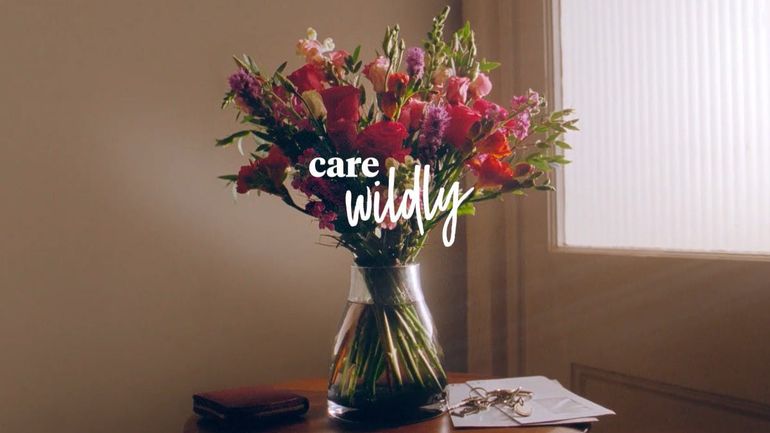
Bloom & Wild's Strategic Shift: Prioritizing Customer Retention for Sustainable Growth

Amidst operational losses, the direct-to-consumer flower brand, Bloom & Wild, reevaluates its strategy by emphasizing customer retention over acquisition. This transition signals a move towards profitability and long-term sustainability in the competitive market.
A still from Bloom & Wild’s 2021 campaign
Bloom & Wild, the online florist, has changed its focus from acquiring new customers to keeping existing ones. This shift in strategy came after the company decided to decrease its marketing budget.
According to the latest report filed with Companies House, which pertains to the period ending on 31 March 2023, the brand is now prioritizing profitability over growth. To achieve this goal, Bloom & Wild reduced its marketing expenses at the beginning of the year and started to see positive financial results in the latter part of the year.
Bloom & Wild mentioned that as they reduced spending, they naturally shifted their strategy from acquiring new customers to focusing on retaining existing ones. In their Companies House filing, they explained that they chose to invest less in brand and performance marketing in order to prioritize increasing the lifetime value of their current customers.
Some marketing experts, like those at the Ehrenberg-Bass Institute, have pointed out that building loyalty (keeping customers) without also increasing market share (getting new customers) may not be effective. They believe that loyalty is closely tied to market share, meaning that as a brand's customer base grows, so does customer loyalty.
As a result, brands with fewer customers are likely to have lower levels of loyalty from those customers.
Bloom & Wild experienced a 19% decrease in revenues from £145.5m to £118m compared to the previous year. The company explained that this decline was due to reduced demand from direct-to-consumer retailers after the pandemic and a strategic choice to focus less on customer acquisition.
The company also noted that the current revenue of £118m is significantly higher, two and a half times bigger, than the revenue recorded before the pandemic.
Operating loss has increased from £20m in its 2022 financial year to £100.2m in its most recent financial year. Additionally, its adjusted EBITDA, which is a measure of profitability, also showed growing losses.
The adjusted EBITDA losses widened to £4.7m compared to £4.2m in the previous year. The business revealed that the majority of these losses (£4.3m) were incurred in the first half of the year. However, there was a significant improvement in profitability in the second half, which was attributed to the decision to cut back on marketing expenses and streamline operations.
Bloom & Wild is not only changing its strategy to prioritize customer retention but also broadening its range to include non-flower gifts.
In its filing, the company stated, "This significantly expands the market potential for the business and gives customers additional incentives to shop on a platform they are familiar with and trust."
Editor's P/S:
Bloom & Wild's shift in strategy from customer acquisition to retention is a reflection of the evolving e-commerce landscape. As the cost of customer acquisition rises, businesses are increasingly looking to nurture existing relationships to drive growth. However, it remains to be seen whether this approach can be effective without also investing in new customer acquisition channels.
The company's decision to expand its product range to include non-flower gifts is a strategic move to diversify its revenue streams and appeal to a broader customer base. By offering a wider variety of products, Bloom & Wild can increase its value proposition and reduce its reliance on a single product category. Additionally, the company's focus on profitability over growth is a prudent move in the current economic climate, which is characterized by rising inflation and interest rates. By reducing its marketing expenses and streamlining operations, Bloom & Wild can improve its financial performance and position itself for long-term success.







